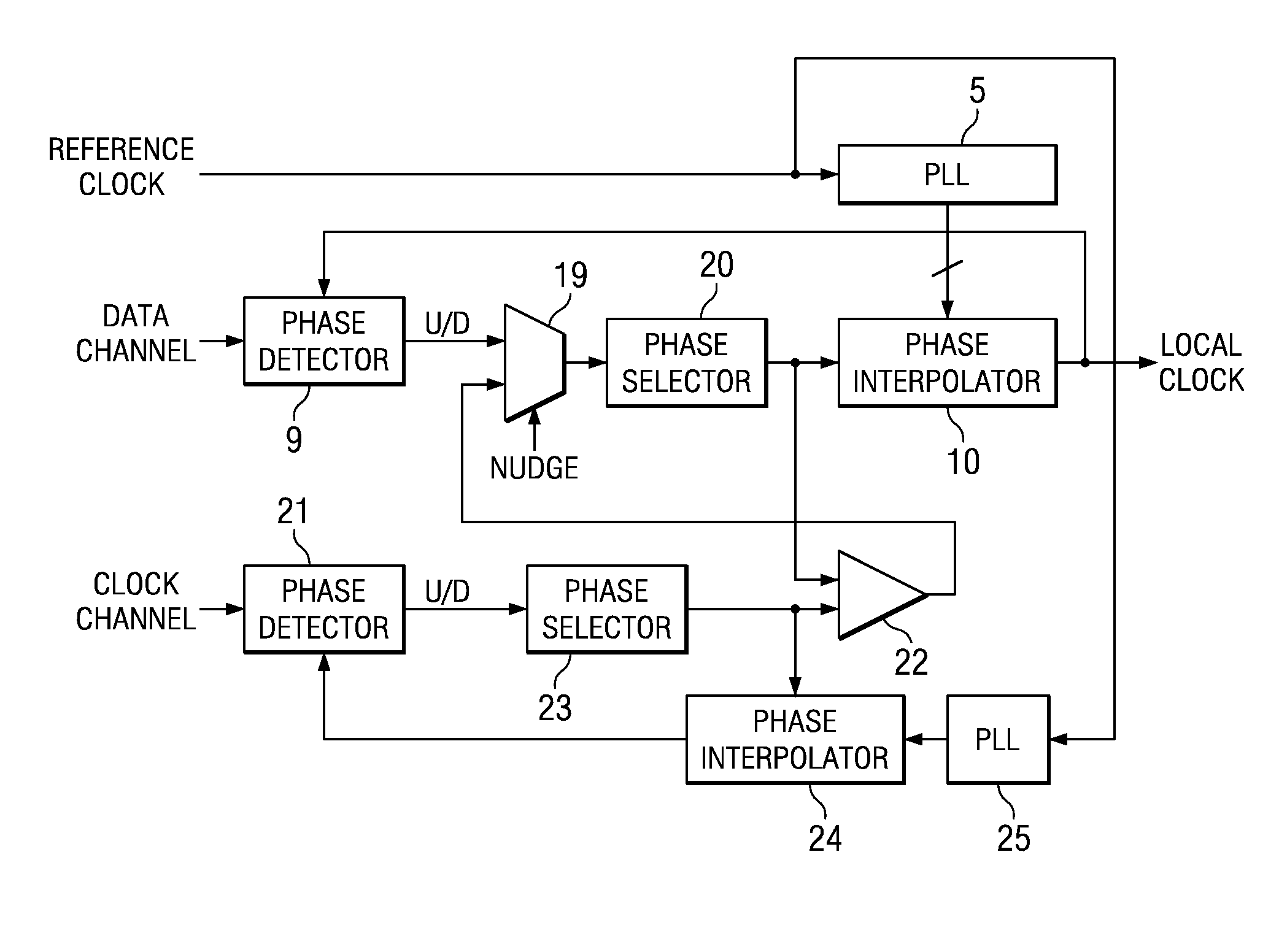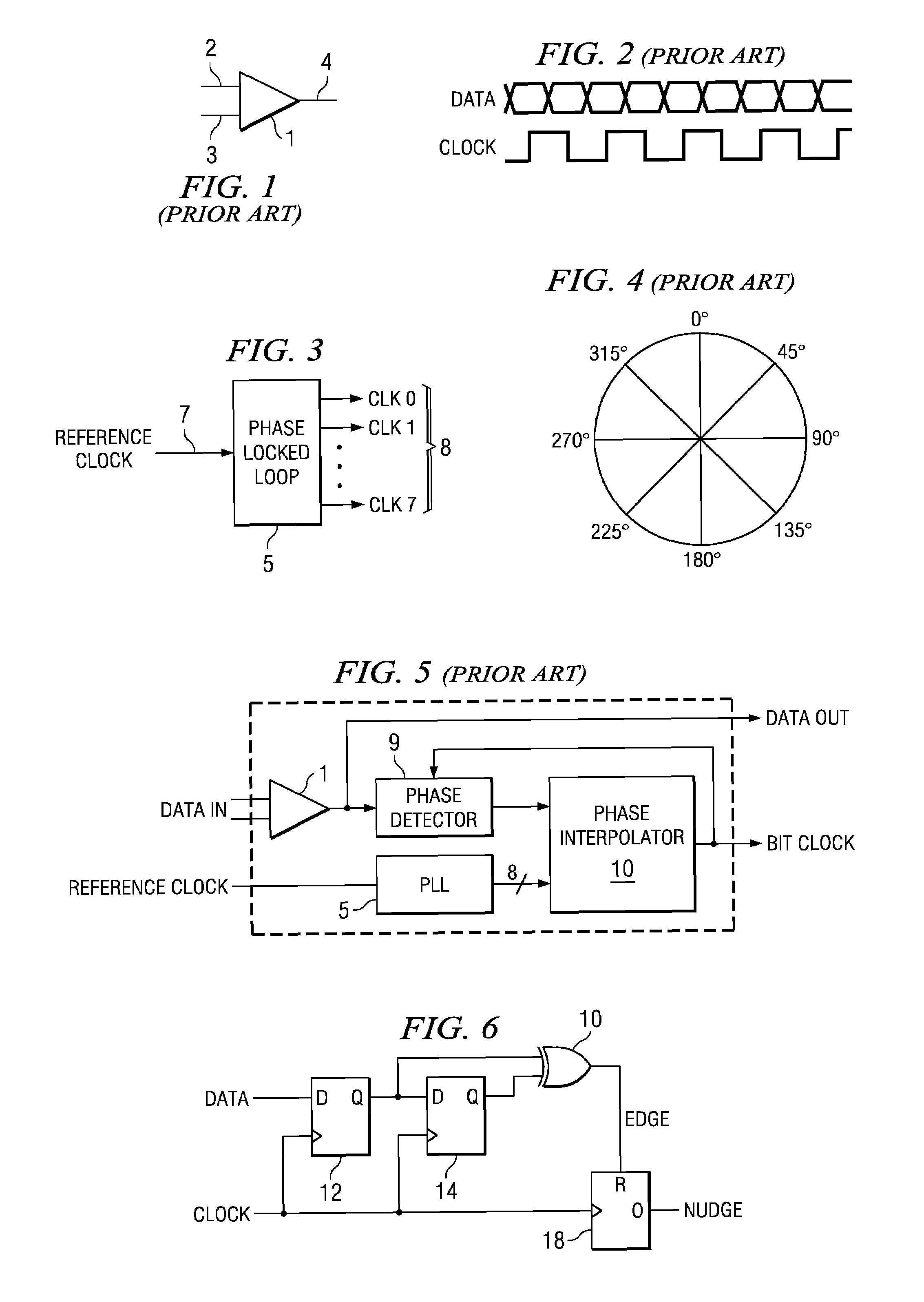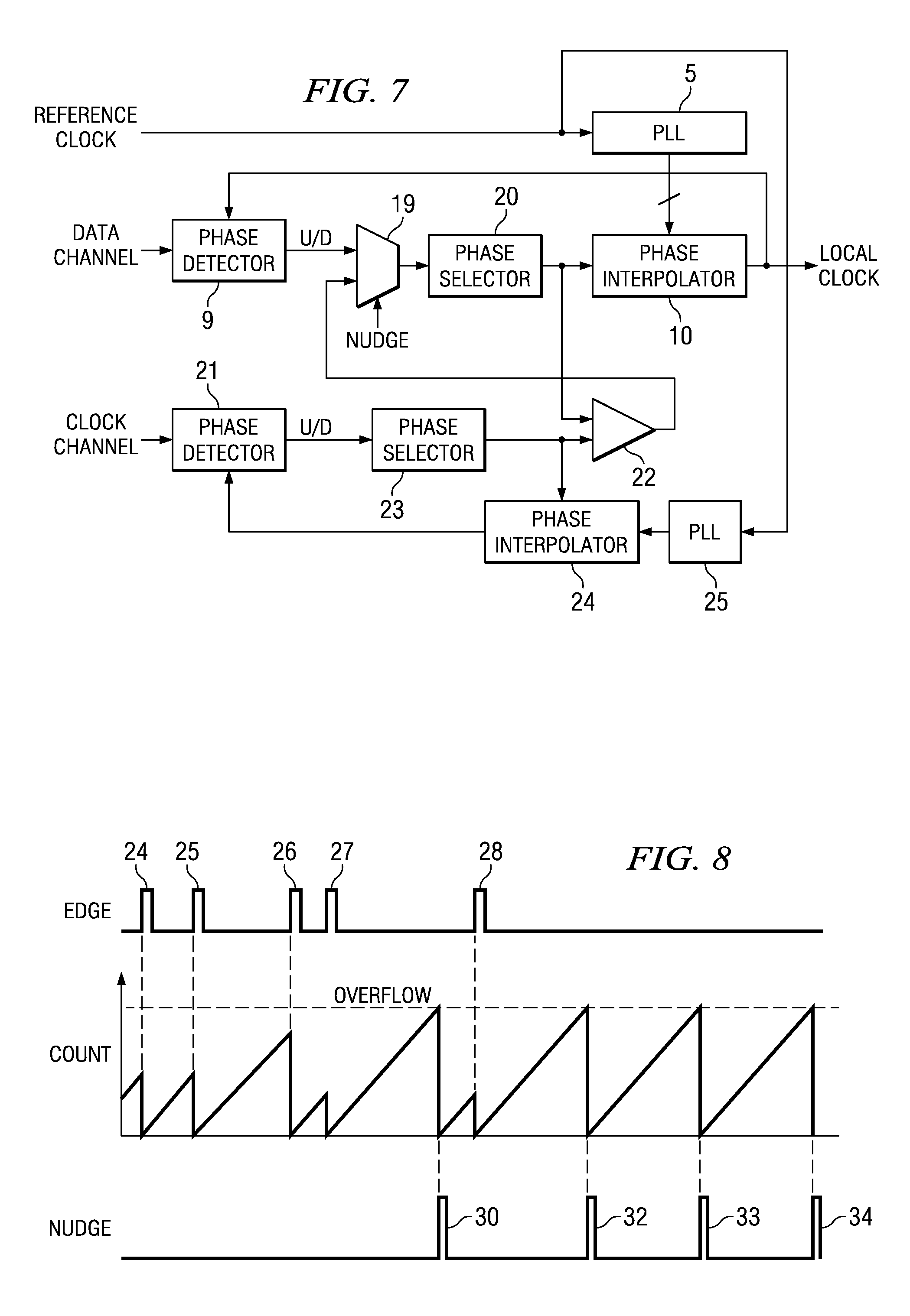Synchronising circuit
a synchronising circuit and circuit technology, applied in the field of synchronising circuits, can solve the problem of less accurate phase of data of that channel, and achieve the effect of avoiding the loss of data
- Summary
- Abstract
- Description
- Claims
- Application Information
AI Technical Summary
Benefits of technology
Problems solved by technology
Method used
Image
Examples
Embodiment Construction
[0075]FIG. 6 shows a circuit that can be used to implement the nudge function described above. The circuit includes flip-flops 12 and 14, exclusive-OR (XOR) gate 16 and counter 18. Flip-flops 12 and 14 and XOR gate 16 are used as an edge detector. The data signal of the relevant data channel is coupled to the D-input of flip-flop 12 and the Q-output of flip-flop 12 is coupled to the D-input of flip-flop 14. The Q-outputs of flip-flops 12 and 14 are respectively coupled to first and second inputs of XOR gate 16, the clock inputs of flip-flops 12 and 14 and counter 18 are coupled to a CLK input and the output of the XOR gate provides an EDGE signal, which is coupled to the reset input R of the counter. The counter is provided with an overflow output O so that each time the counter overflows, a nudge signal is provided.
[0076]The CLK input may be a bit-clock, both positive and negative edges being used or, alternatively, a double-rate clock, only positive edges being used.
[0077]The nudg...
PUM
 Login to View More
Login to View More Abstract
Description
Claims
Application Information
 Login to View More
Login to View More - R&D
- Intellectual Property
- Life Sciences
- Materials
- Tech Scout
- Unparalleled Data Quality
- Higher Quality Content
- 60% Fewer Hallucinations
Browse by: Latest US Patents, China's latest patents, Technical Efficacy Thesaurus, Application Domain, Technology Topic, Popular Technical Reports.
© 2025 PatSnap. All rights reserved.Legal|Privacy policy|Modern Slavery Act Transparency Statement|Sitemap|About US| Contact US: help@patsnap.com



